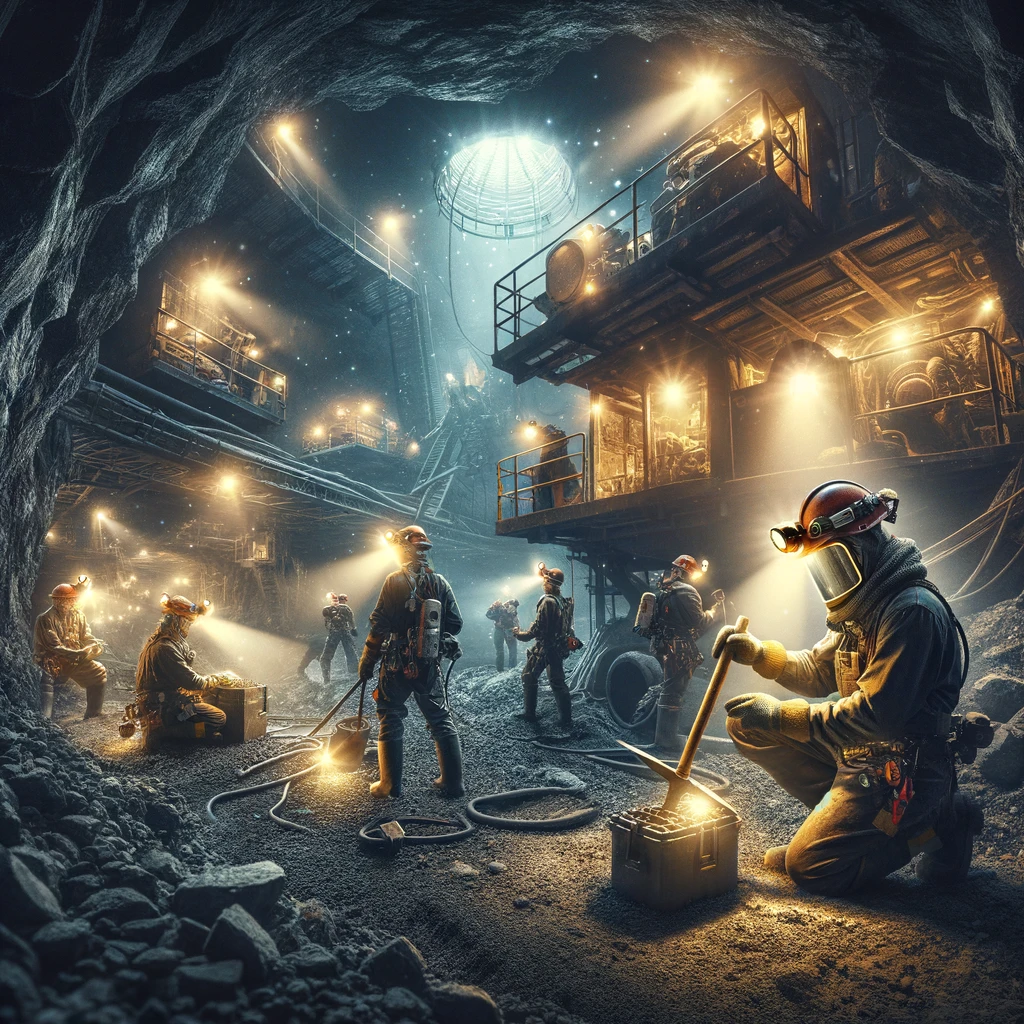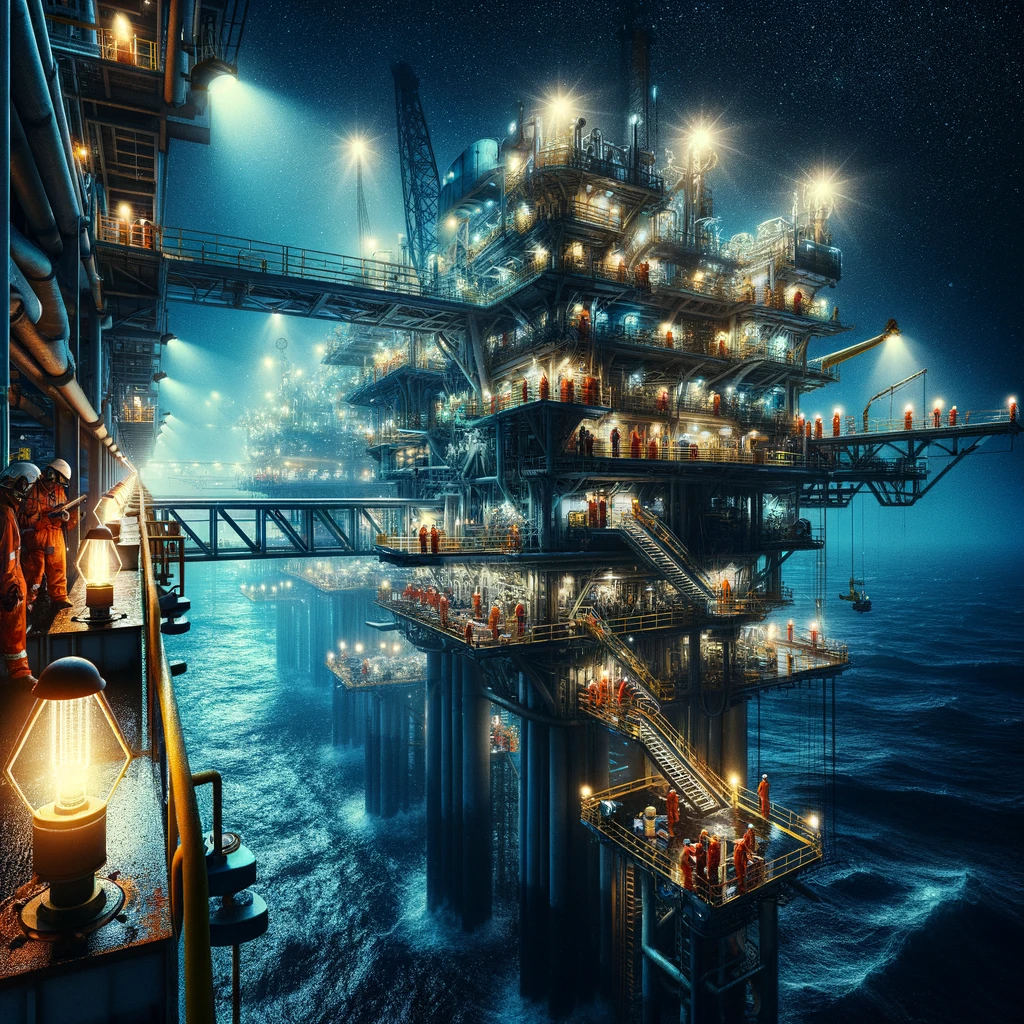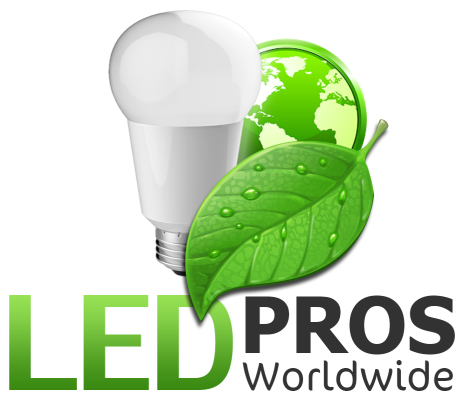In a world where safety can’t take a backseat, explosion proof lighting has become the beacon of hope for industries operating in hazardous areas. Now, if you’re scratching your head, wondering about the nitty-gritty of explosion proof lighting prices, you’ve hit the jackpot with this article. From the dingy corners of oil rigs to the bustling floors of pharmaceutical plants, these robust lights shine the brightest, ensuring operations go off without a hitch—or an unwanted spark. Let’s dive deep into the illuminating world of explosion proof lighting, where we’ll decode prices, explore options, and shed light on the best picks for your needs.
What Makes Explosion Proof Lighting a Must-Have?
Before we get down to brass tacks, let’s understand the “why” behind explosion proof lighting. Simply put, these aren’t your average Joe lights. They’re designed to contain any explosion within the fixture itself, preventing a potentially disastrous chain reaction in volatile environments. With features like heavy-duty casings and special seals, they’re the unsung heroes in places where flammable gases or dust are part of the daily grind. Read more about where is explosion proof lighting needed here.
Peeling Back the Layers on Explosion Proof Lighting Prices
Talking turkey, the price tags on these lights can vary wildly, and here’s why:
*Materials and Design: You’re not just paying for a light; you’re investing in a fortress. The high-quality materials and intricate designs that make these lights explosion proof also add to the cost.
*Certifications: Lights that boast certifications like Class 1, Division 1, and Class 1, Division 2 are designed for specific hazardous environments. The rigorous testing they undergo isn’t cheap, and this is reflected in the price.
*Technology: From LED options that promise energy efficiency to smart features that allow remote monitoring, the tech inside these lights can also influence the price.
Class 1, Division 1 vs. Class 1, Division 2: A Price Perspective
When it comes to hazardous locations, not all are created equal—and neither are the lights that serve them. Here’s a quick breakdown:
*Class 1, Division 1: These areas are where hazardous materials are present under normal operations. Lighting for these zones needs to be top-notch, and yes, this means a higher price point.
*Class 1, Division 2: These zones are a tad less risky, with hazardous materials present only under abnormal conditions. Lights designed for these areas are slightly less expensive but still a significant investment.
Making Cents of Options: LED vs. Traditional
Let’s cut to the chase—LEDs are where it’s at. They might cost more upfront than their traditional counterparts, but they’re the gift that keeps on giving. With lower energy consumption and longer lifespans, they can help you save a bundle in the long run. Plus, they’re tougher than a two-dollar steak, making them perfect for hazardous environments.
 |
FAQs: Your Burning Questions Answered
Q1. Why are explosion proof lighting prices so high?
A1. Because safety doesn’t come cheap. The design, materials, and certification processes all contribute to the cost.
Q2. Can I use regular lights in a hazardous location to save money?
A2. As tempting as it may sound, that’s a hard no. The risks far outweigh the savings. Stick to the lights built for the job.
Q3. How can I save money on explosion proof lighting?
A3. Look for LED options and consider the total cost of ownership, not just the initial price tag. Also, keep an eye out for energy rebates and incentives.
While the sticker shock of explosion proof lighting prices might have you seeing stars, remember, it’s all about keeping your operations safe and sound. By understanding the factors that influence costs and exploring the options available, you can make an informed decision that lights up your workspace without blowing your budget. So, whether you’re outfitting a Class 1, Division 1 zone or a slightly less daunting Class 1, Division 2 area, there’s a lighting solution that’s just right for your needs. Remember, in the world of hazardous locations, cutting corners can lead to explosive consequences. Investing in the right explosion proof lighting is not just a smart choice—it’s a necessary one.
Now, let’s wade through the murky waters of pricing for Class 1, Division 1 and Class 1, Division 2 explosion proof lighting, and get to the bottom of why these two cousins have such a wide gap in their price tags.
A Tale of Two Classifications: The Price Divide
Imagine you’re at a family reunion. On one side, you’ve got the Class 1, Division 1 folks—let’s call them the “High Risks.” On the other, the Class 1, Division 2 crowd, or the “Occasional Risks.” Both are part of the same explosive-proof lighting family, but boy, do they live different lives.
The High Stakes World of Class 1, Division 1
Class 1, Division 1 lights are the daredevils, designed for areas where hazardous materials are like uninvited guests that just won’t leave. These zones are high-risk, with explosive gases or vapors hanging around during normal operations. Lighting up these areas requires the lighting equivalent of a superhero suit—top-notch, robust, and, unfortunately, with a price tag that’ll make your wallet wince. Read more about What is Class 1 Division 1 LED Lighting? here.
Why the hefty price, you ask? It’s all about the design and materials. These lights need to be tough enough to withstand an explosion, containing it within their housing and preventing it from triggering a larger, more catastrophic blast. They’re the A-listers of the explosion proof lighting world, with heavy-duty casings, advanced sealing technologies, and the kind of certifications that reassure you they can handle the heat.
The Less Daunting, Still Demanding Class 1, Division 2
Now, scoot over to the Class 1, Division 2 gang—the “Occasional Risks.” They’re designed for spaces where hazardous materials are like those relatives who only show up unannounced now and then. The risk of explosion is less frequent because these materials are present under abnormal conditions.
These lights can relax a bit, not having to flex their muscles 24/7. They still need to be tough, but the level of robustness (and the cost of achieving it) is lower compared to their Class 1, Division 1 counterparts. They’re designed to prevent ignition of hazardous materials in the case of a fault or unusual condition, which still requires significant engineering but allows for some cost-saving in materials and design complexity.
Bridging the Price Gap
So, why the big difference in price tags? It boils down to the risk factor and the engineering required to mitigate that risk. Class 1, Division 1 lighting is the heavyweight champion, designed to handle constant danger, requiring more sophisticated, expensive technology to do its job. On the flip side, Class 1, Division 2 lighting can afford to be a bit leaner, focusing on occasional risks, which naturally makes them less expensive to produce and purchase.
It’s like comparing a high-end, bulletproof SUV with a standard, safety-featured family car. Both serve the primary purpose of transportation, but the level of protection (and the price) varies significantly based on the potential hazards they’re built to face.
The Price of Safety
Navigating the price difference between Class 1, Division 1, and Class 1, Division 2 explosion proof lighting is a bit like choosing between a tank and an armored car. Both offer protection, but one is built for war zones while the other is suited for less hazardous environments. The choice (and the cost associated with it) depends on the level of risk you’re looking to mitigate.
At the end of the day, whether you’re investing in the high-risk heroism of Class 1, Division 1 or the cautious readiness of Class 1, Division 2, you’re paying for peace of mind in hazardous conditions. And that, folks, is worth every penny.
 |
The Great Divide: USA vs. China on the Lighting Battlefield
When we talk about the showdown between USA-made and Chinese-made explosion proof lighting fixtures, we’re not just comparing price tags; we’re diving into a saga of quality, regulations, and, yes, the almighty dollar. So, buckle up as we embark on this enlightening journey.
Picture this: On one side of the ring, we have the sturdy, proud, and somewhat pricey USA-made explosion proof lighting fixtures. On the other side, the agile, cost-effective, and widely available Chinese-made contenders. It’s not just a price war; it’s a tale of two manufacturing philosophies.
The Stars and Stripes of Lighting: USA-Made Fixtures
USA-made explosion proof lighting fixtures come with a reputation as solid as Uncle Sam’s. Here’s the deal:
*Quality and Standards: These fixtures are the cream of the crop, often exceeding stringent safety and quality standards. Think of them as the lighting equivalent of a gourmet burger—every ingredient is top-notch, locally sourced, and comes with a seal of approval.
*Regulations and Certifications:** With great power comes great responsibility. USA-made fixtures often meet or exceed the rigorous requirements of various U.S. regulatory bodies. This meticulous attention to detail and safety can drive up the cost.
*Cost of Production:** Higher labor costs, adherence to environmental regulations, and the use of premium materials can make these lights more expensive than their international counterparts.
The Dragon’s Offer: Chinese-Made Fixtures
On the flip side, Chinese-made explosion proof lighting fixtures have taken the market by storm, offering:
*Competitive Pricing:** Thanks to lower production costs, these fixtures can be significantly cheaper than their American cousins. They’re like the fast-food burger—quick, satisfying, and easy on the wallet.
*Flexibility and Variety:** China’s manufacturing prowess means they can churn out a wide variety of fixtures at a rapid pace, offering a buffet of options for consumers.
*Quality Spectrum:** It’s a mixed bag. While many Chinese manufacturers have stepped up their game, offering products that meet international standards, the range in quality can be as vast as the country itself.
Bridging the Gap: The Price Difference Explained
So, why such a stark difference in price? It boils down to a few key factors:
*Labor Costs:** Higher wages in the U.S. contribute to the cost of making just about anything, including explosion proof lighting.
*Materials and Quality Control:** U.S. manufacturers often use higher-grade materials and adhere to stricter quality control measures, which can bump up the price.
*Regulatory Compliance:** Complying with U.S. safety and manufacturing standards can add to the cost, but it also adds to the peace of mind.
The Verdict: You Get What You Pay For
Choosing between USA-made and Chinese-made explosion proof lighting fixtures isn’t just about saving a few bucks. It’s about balancing cost, quality, and compliance. While Chinese fixtures might win the price war, USA-made options often take the crown in quality and reliability battles.
In the grand scheme of things, the choice might come down to specific needs, budget constraints, and a pinch of personal preference. Just remember, when it comes to safety in hazardous environments, cutting corners can lead to explosive outcomes—literally.
Navigating the differences between USA-made and Chinese-made explosion proof lighting fixtures is like choosing between a bespoke suit and off-the-rack attire. Both will dress you up, but the fit and finish (and price) will vary. Whether you lean towards the robust reliability of American craftsmanship or the cost-effective versatility of Chinese manufacturing, make sure your choice lights up your world in the safest way possible. After all, when the lights stay on, so does the work.
[gravityform id=”1″ title=”true” description=”true”]
